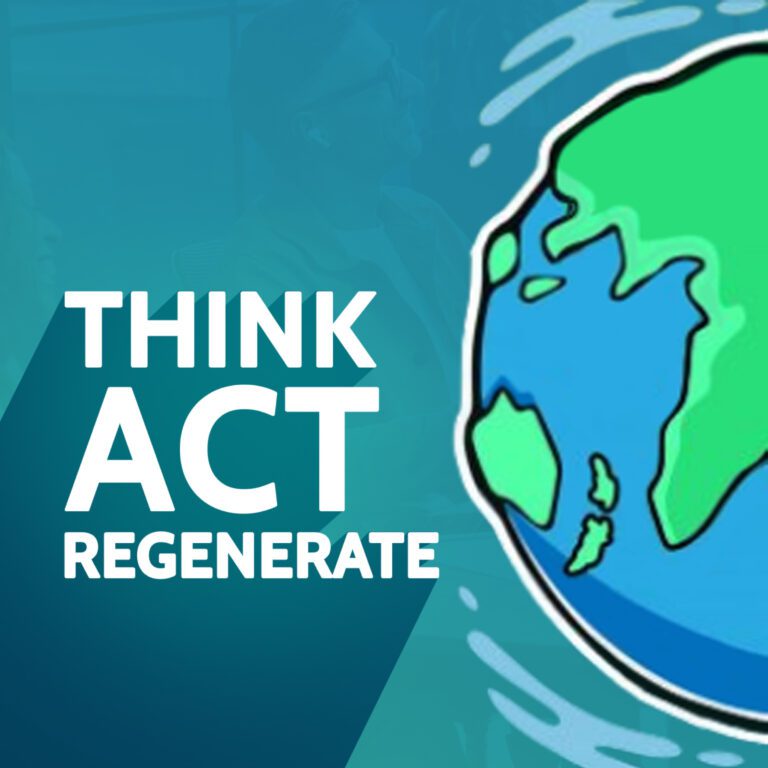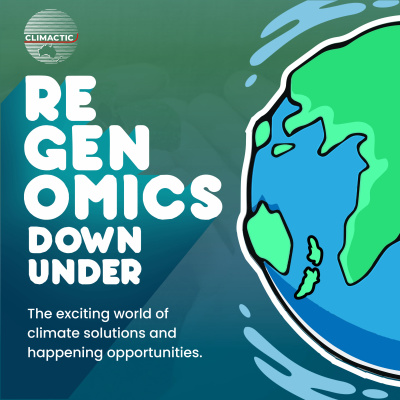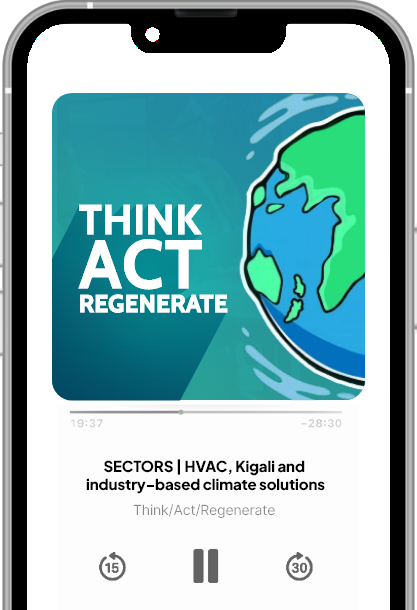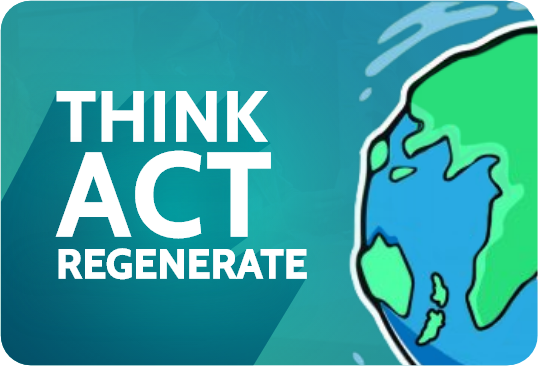
THINK ACT REGENERATE is a podcast by Leigh Baker of ThinkActRegenerate which explores the wealth of regenerative design solutions happening on the ground in Australia and New Zealand, as well as around the world.
ReGenOmics Down Under is a podcast by Leigh Baker of Balance3 exploring the wealth of climate solutions happening on the ground in Australia and New Zealand, as well as around the world.
This episode explores what the human race already knows about how to reverse global warming – starting with the commercial, scaling solutions modelled and ranked by the independent not-for-profit Project Drawdown in 2017 (and updated in 2020)
Project Drawdown’s findings include:
We CAN reverse global warming – even if we just use the quantifiable, multi-benefit commercial solutions that WE ALREADY HAVE and are already scaling.
NONE of the 80 solutions require further policy change from national governments (while it would help, all the solutions ARE commercial and ARE scaling)
79 of the solutions are multi-benefit solutions that make the world BETTER (the only harmful solution of significance was nuclear).
The 80 solutions are WHOLE-OF-ECONOMY solutions that go way beyond electriciy generation and transport to include food, agriculture, construction, education, health and materials.
The high-potential new solutions that they didn’t have numbers for are likely to be every bit as powerful and even more regenerative than what we have now.
The list of 80 commercial, quantified Drawdown solutions can a bit overwhelming, and each one only gets 2 pages of explanation.
So in this episode we dive in to a couple and see how they’re happening in Australia, with examples from two past Climactic episodes.
Tropical forest regeneration
Insulation
Forest regeneration ranked #5 and #12 on the original Drawdown top 80. And here’s an example of what a small group of concerned Australian researchers created, told by Jess Panegyres from The Australian Environmental Grantmakers Network
Insulation ranked #21 on the original Drawdown list. We explore the action that one Perth insulation installer began back while Drawdown was still doing their modelling.
Drawdown only modelled solutions where they could find a robust, peer-reviewed data sets – so there are many, many more powerful, existing solutions that aren’t that well-measured yet – from vortex water processing to cellulose-based building materials.
So it’s more useful to think of Drawdown as a guide book of highlights rather than a definitive encyclopedia.
We live in a world where most of the mainstream media coverage on climate action is focused on either:
high-level action where big government and big business do big things; OR
low-level actions about consumers using less or spending more on expensive alternatives.
That’s barely beginning of the story. Those two themes like the pastry layers on a vanilla slice – necessary, but not the main event. There’s actually a wealth of accessible action when you get out and start looking for problems that need solving and the opportunities they create.
Solving the challenges we face has created a quiet design revolution – the development of systems and processes that regenerate communities and ecosystems. It’s a whole lot easier to see the best, multi-benefit solutions when you understand the straightforward principles regenerative design.
Re-gen-omics Down Under explores the solutions happening and the thinking behind them – so if you’re interested in solutions, learn to find your action opportunities and listen to your gut.
LINKS
Paul Hawken, founder of Project Drawdown, speaking on Drawdown: The Most Comprehensive Plan Ever Proposed to Reverse Global Warming https://www.youtube.com/watch?v=AOTLtrt6OIE
Key pages from Project Drawdown's website (where their open-source finding are published):
Their current list of evidence-based solutions https://drawdown.org/solutions
Their downloadable updates https://drawdown.org/drawdown-review
The Climactic Live episode BZE – Fight for Planet A Panel for the forest regeneration story https://www.climactic.fm/show/climactic/climactic-live-bze-fight-for-planet-
Original music by Hopkinson Creative

(Recorded prior to Think Act Regenerate rebrand in 2023)
This episode explores what the human race already knows about how to reverse global warming – starting with the commercial, scaling solutions modelled and ranked by the independent not-for-profit Project Drawdown in 2017 (and updated in 2020) Project Drawdown’s findings include:
- We CAN reverse global warming – even if we just use the quantifiable, multi-benefit commercial solutions that WE ALREADY HAVE and are already scaling.
- NONE of the 80 solutions require further policy change from national governments (while it would help, all the solutions ARE commercial and ARE scaling)
- 79 of the solutions are multi-benefit solutions that make the world BETTER (the only harmful solution of significance was nuclear).
- The 80 solutions are WHOLE-OF-ECONOMY solutions that go way beyond electricity generation and transport to include food, agriculture, construction, education, health and materials.
- The high-potential new solutions that they didn’t have numbers for are likely to be every bit as powerful and even more regenerative than what we have now.
The list of 80 commercial, quantified Drawdown solutions can a bit overwhelming, and each one only gets 2 pages of explanation. So in this episode we dive in to a couple and see how they’re happening in Australia, with examples from two past Climactic episodes. Tropical forest regeneration and Insulation
Forest regeneration ranked #5 and #12 on the original Drawdown top 80. And we listen back to an example of what a small group of concerned Australian researchers created, told by Jess Panegyres from The Australian Environmental Grantmakers Network
Insulation ranked #21 on the original Drawdown list. We explore the action that one Perth insulation installer began back while Drawdown was still doing their modelling.
Drawdown only modelled solutions where they could find a robust, peer-reviewed data sets – so there are many, many more powerful, existing solutions that aren’t that well-measured yet – from vortex water processing to cellulose-based building materials. So it’s more useful to think of Drawdown as a guide book of highlights rather than a definitive encyclopedia.
We live in a world where most of the mainstream media coverage on climate action is focused on either: high-level action where big government and big business do big things; OR low-level actions about consumers using less or spending more on expensive alternatives.
That’s barely beginning of the story. Those two themes like the pastry layers on a vanilla slice – necessary, but not the main event. There’s actually a wealth of accessible action when you get out and start looking for problems that need solving and the opportunities they create. Solving the challenges we face has created a quiet design revolution – the development of systems and processes that regenerate communities and ecosystems.
It’s a whole lot easier to see the best, multi-benefit solutions when you understand the straightforward principles regenerative design. Re-gen-omics Down Under explores the solutions happening and the thinking behind them – so if you’re interested in solutions, learn to find your action opportunities and listen to your gut.
LINKS
Paul Hawken, founder of Project Drawdown, speaking on Drawdown: The Most Comprehensive Plan Ever Proposed to Reverse Global Warming https://www.youtube.com/watch?v=AOTLtrt6OIE
Key pages from Project Drawdown’s website (where their open-source finding are published): Their current list of evidence-based solutions https://drawdown.org/solutions
Their downloadable updates https://drawdown.org/drawdown-review












